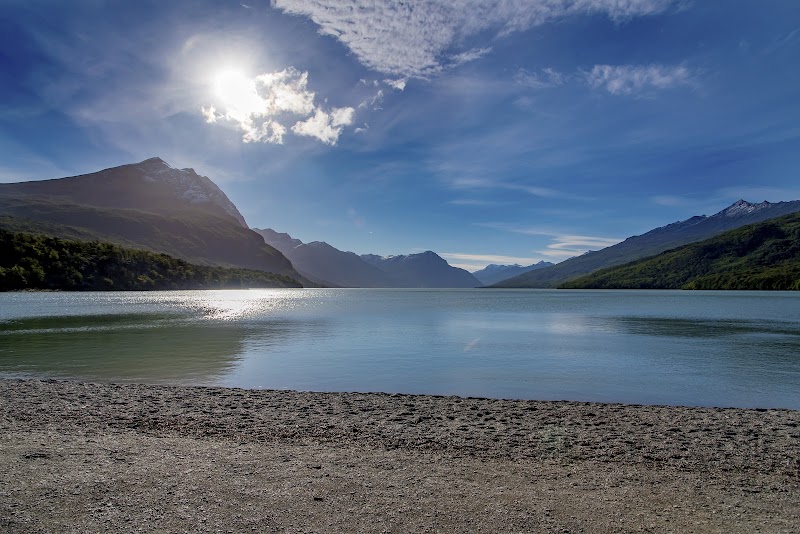
End of the World Marathon: Racing Through Ushuaia’s Wild Frontier
The End of the World Marathon in Ushuaia, Argentina, offers more than a race—it’s a journey along Patagonia’s raw southern frontier. This guide prepares you for the challenge ahead with practical insights on terrain, weather, and gear to turn your run or hike into a true adventure.
Prepare for Variable Weather
Dress in moisture-wicking layers and carry a windproof jacket to handle rapid temperature changes and strong Patagonian winds.
Choose Trail-Specific Footwear
Use sturdy trail runners with aggressive grip to navigate loose gravel, dirt paths, and occasional muddy sections safely.
Hydrate Strategically
Bring a hydration pack or bottles; water stops are limited and cold weather can mask dehydration symptoms.
Plan Your Start Early
Begin the marathon at dawn to take advantage of cooler temperatures and longer daylight, reducing exposure to afternoon winds.
End of the World Marathon: Racing Through Ushuaia’s Wild Frontier
At the southernmost edge of the globe, Ushuaia’s End of the World Marathon challenges runners with a unique blend of rugged terrain and breathtaking scenery. Covering a full 42.195 kilometers, this race stretches across dirt tracks, gravel paths, and patches of forest, with an elevation gain around 350 meters that hints at more than just endurance—it asks for respect for a land fiercely itself.
The trail winds along the Beagle Channel, where cold winds push against your stride and waves dare to shout their presence from below. You pass lenga forests, their ancient trunks standing like quiet sentinels, while the snow-capped Martial Mountains loom overhead, their jagged edges framed against the endless Patagonian sky. This isn’t just a marathon; it’s an engagement with nature’s raw character, demanding steady pacing and sharp attention.
Expect temperatures that can swing abruptly—from bright midday sun to chilling gusts that sweep down from the Andes. Footwear choices matter: sturdy trail runners with reliable grip will make the shifting surfaces manageable, and moisture-wicking layers are crucial to adjust to fluctuating weather. Hydration isn’t just a suggestion here; it’s essential. Water stations are spaced, but carrying a light hydration pack guarantees you control over your intake, especially during wind-driven stretches where the cold can mask thirst.
Timing your race is strategic. The event traditionally occurs in March or early April, when daylight lingers but the fierce Patagonian summer begins its gentle fade. This period offers optimal trail conditions—minimal mud, clear skies—but the weather remains unpredictably cool. An early start maximizes daylight and eases the risk of afternoon gusts picking up.
For those less inclined to run, the course offers segments perfect for brisk hiking, allowing a more intimate pace with the environment’s storytelling. Wildlife such as Andean condors often circle high above, their wings casting shadows that play momentarily on the flickering terrain below. Local flora, including native berries and resilient shrubs, edge the trail as witnesses to your journey.
Embrace the challenge with pragmatic enthusiasm: the End of the World Marathon isn’t about conquering nature but moving alongside its relentless spirit. Each step is dialogue with a place both wild and purposeful, where your effort meets a land that has weathered millennia. Arrival feels like both achievement and initiation—proof that the world’s edge is more than a finish line; it’s the start of a different kind of adventure.
Nearby Trips
All Adventures
Boat Charters
Water Activities
Adventures near Ushuaia, Argentina
Discover the unique and memorable adventures that make Ushuaia, Argentina special.
Frequently Asked Questions
What is the profile of the End of the World Marathon course?
The course covers 42.195 km with about 350 meters of total elevation gain, primarily running on gravel and dirt trails, interspersed with forested sections along the Beagle Channel and foothills of the Martial Mountains.
How challenging is the weather during the marathon?
Weather can be unpredictable, featuring strong cold winds, sudden temperature drops, and occasional rain. Dressing in layers and preparing for wind exposure is critical for comfort and safety.
Are water stations available along the route?
Yes, but stations are spaced out, so bringing your own hydration—such as a pack or bottles—is advised to maintain proper fluid intake.
Is the marathon suitable for beginner trail runners?
While accessible to determined beginners, the terrain and unpredictable weather make the event more suitable for runners with moderate trail experience and a good fitness base.
What wildlife might I see during the marathon?
Keep an eye out for Andean condors soaring overhead, local foxes at forest edges, and various Patagonian bird species; wildlife is cautious but present.
Can I hike parts of the marathon route instead of running?
Yes, sections of the course offer excellent hiking options, allowing less paced exploration of the forests and shoreline vistas if running the full marathon isn’t your goal.
Recommended Gear
Trail Running Shoes
Durable shoes with good traction protect against rough, loose, and uneven trail sections.
Windproof Jacket
Blocks chilling winds common at the marathon’s coastal and highland stretches.
Hydration Pack
Allows consistent fluid access on routes where water stops are spaced far apart.
Base Layers
Moisture-wicking base layers help regulate body temperature through fluctuating conditions.
Local Insights
Hidden Gems
- "Mirador del Valle de Andorra for panoramic views"
- "Laguna Esmeralda’s turquoise waters off the race path"
Wildlife
- "Andean condor"
- "South American gray fox"
- "Magellanic woodpecker"
History
"Ushuaia grew from a penal colony into a hub for Patagonian explorers; the marathon’s name honors its status as the world’s southernmost city accessible by road."
